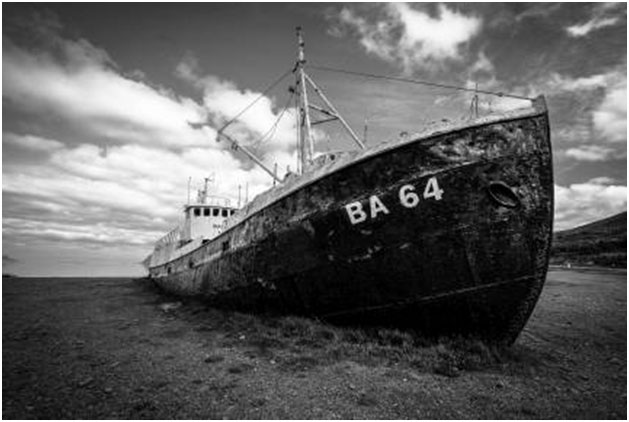
Armed with awesome technology, the Navy of the twenty-first century is smaller in both vessels and personnel. Faced with new demands and many traditional responsibilities, the U.S. Navy continues to offer men and women a rewarding career with wonderful possibilities either for a career of military service or for just one "hitch."
Enjoying its third century of service and commitment to the American people, the United States Navy began its career during the American Revolution. The function of the Navy during wartime is well known; however, Americans give little thought to its peacetime activities. The Navy has successfully responded to both tasks. It has distinguished itself in a series of military encounters with foreign powers, including the two great challenges of this century.
Although considerably smaller than it was with 6,000 ships in its service at the end of World War II in 1945, today's Navy, numbering approximately 340 ships, remains vigilant. More diverse than its earlier counterparts, its fleet includes not only mammoth aircraft carriers but small boats capable of speeds over one hundred miles per hour. Navy personnel number about 380,000, of which 55,000 are officers and 325,000 are enlisted people; some others are in college NROTC programs and at the U.S. Naval Academy. Peacetime naval duties include a great variety of research activities such as shark and dolphin behavior, undersea habitat, weather forecasting, weapons development, interpersonal relationships, ship development, space exploration, water pollution prevention, and laser technology. The Navy remains available for evacuation in case of natural disasters and political crises and for deployment around the world to maintain security. During noncombat periods, the Navy practices a variety of tactics and exercises its weaponry and personnel.
Given its many roles, the Navy is a large and complex organization with tremendously varied career opportunities. Currently, there are more than seventy-five job skills open to men and women. Navy career positions may be divided into enlisted personnel and officers.
When new enlistees enter the Navy, they usually receive the position of seaman recruit. Advancement is through the ranks in the following order:
Seaman recruit seaman apprentice seaman
Petty officer, third class petty officer, second class petty officer, first class chief petty officer senior chief petty officer master chief petty officer
The Navy currently provides eight and a half weeks of recruit training with a full schedule of military and technical subjects. All recruits are trained at Great Lakes Naval Training Center (north of Chicago) in Illinois.
Recruits spend six months in the Navy prior to advancing to apprenticeship in their chosen specialty-construction, fireman, hospital, and others. After sufficient training, they qualify as petty officer, third class.
The majority of individuals in clerical and administrative jobs work in offices. More than one out of five perform clerical and administrative jobs; others serve as bookkeepers or accountants. Good opportunities exist for advancement and salary increases in this field.
Disbursing clerks make transactions and keep records of payments and receipts for the Navy's personnel and purchasing operations. This work takes place at both sea and shore installations. Qualifications include a good memory, mathematical ability, and attention to detail. More than two thousand people serve in this position in the Navy. Personnel people maintain service records and perform related enlisted personnel administration duties. Yeomen perform secretarial and clerical tasks and office administrative duties. They order office supplies and operate photocopying and duplicating equipment. If you enjoy working in an office with a group of people, this position might interest you. Presently, more than ten thousand persons serve in this capacity.
The Navy has many skill groups closely related to civilian communications occupations. These will be enjoyed by those people with talents in photography, art, writing, and other communications media. Some communications personnel have attended college or post-high school programs. Competition is keen in these fields. Salaries vary by rank, but are generally good; this fact, coupled with independence and creativity, makes for high job satisfaction. This field includes crypto logic technicians, illustrator-drafters, intelligence specialists, journalists, lithographers, musicians, and a major area, radiomen.
Navy journalists gather news about people, events, and activities and prepare stories for publication. They may edit a ship's newspaper, write a press release for a sailor's hometown newspaper, or record an interview for radio broadcast. Some write speeches, arrange public affairs exhibitions, and brief newspaper people on new developments. Consequently, these men and women must have the ability not only to think creatively but to work well with others.
Serving as the Navy's photography professionals are photographer's mates. They cover news stories, prepare audiovisual presentations, and produce television shows. Although there are more than twenty-five hundred of these positions in the Navy, placement is limited to the highly qualified. As with all other careers, those persons chosen attend technical schools to develop their photographic skills.
See the following articles for more information:
- Find Your Calling: A Checklist
- 5 Ways To Build Your Career Outside of the Office
- How To Impress Your Interviewer When Making a Career Change
- 5 Tips For Successful Networking
